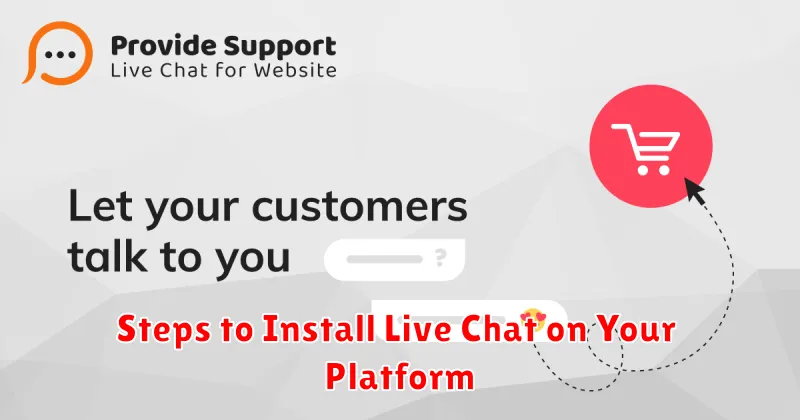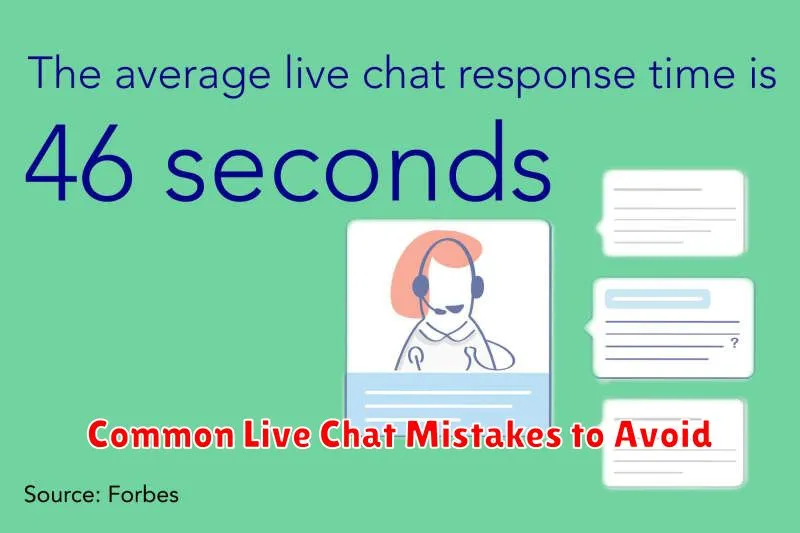In today’s competitive e-commerce landscape, providing exceptional customer service is paramount to success. Real-time support through live chat has become an essential tool for online businesses looking to boost sales and enhance customer satisfaction. This comprehensive tutorial provides a step-by-step guide on how to install live chat on your online store, empowering you to connect with customers instantly, address their queries efficiently, and ultimately, drive conversions. By implementing live chat, you can offer personalized assistance, reduce cart abandonment rates, and build stronger customer relationships, all of which contribute to increased sales and a thriving online store.
This tutorial will cover various aspects of integrating live chat into your online store, including selecting the right live chat software, the installation process itself, and best practices for maximizing its effectiveness. Whether you are a small business owner or managing a large e-commerce platform, this guide will provide you with the knowledge and resources you need to leverage the power of real-time support to boost sales. Learn how to seamlessly integrate live chat functionality, configure essential settings, and train your team to provide outstanding customer service that converts visitors into loyal customers. Take the first step towards enhancing your online store’s performance and discover the transformative potential of live chat for boosting sales.
Benefits of Live Chat for Online Stores
Integrating live chat functionality into your online store can significantly enhance the customer experience and boost sales. Real-time support allows you to address customer queries instantly, reducing frustration and cart abandonment.
Live chat provides a personalized shopping experience. Shoppers can receive tailored product recommendations and assistance with navigating the website. This personalized interaction fosters a sense of connection and encourages purchases.
Increased conversion rates are a key benefit. By promptly answering questions and addressing concerns, live chat helps convert hesitant visitors into paying customers. This immediate support can be crucial in securing a sale.
Live chat also contributes to improved customer satisfaction. The readily available assistance reassures customers that their needs are valued. This positive experience builds loyalty and encourages repeat business.
Finally, live chat can offer valuable insights into customer behavior. By analyzing chat transcripts, businesses can identify common pain points, product preferences, and areas for improvement on their website.
Choosing the Right Live Chat Software
Selecting the right live chat software is crucial for maximizing its benefits. Several factors should influence your decision. Consider your budget, as pricing models vary from free plans with limited features to premium subscriptions with advanced functionalities. Think about the size of your team and the anticipated chat volume.
Scalability is important; choose a solution that can grow with your business. Evaluate the features offered. Essential features include real-time chat, canned responses, and chat history. More advanced options may offer file sharing, proactive chat invitations, and visitor tracking.
Integration with your existing CRM, help desk system, or e-commerce platform is another key factor. Seamless integration streamlines workflow and improves efficiency. Finally, consider the software’s ease of use for both your team and your customers. A user-friendly interface ensures quick adoption and a positive customer experience.
Steps to Install Live Chat on Your Platform

Installing live chat on your online store is generally a straightforward process. While specific steps vary depending on the chosen software and your platform (e.g., Shopify, WooCommerce, custom website), the general process remains similar.
1. Account Creation and Software Selection
First, select your preferred live chat software and create an account. Most providers offer free trials or freemium plans, allowing you to test the software before committing.
2. Obtain the Installation Code
After registering, you’ll receive a unique JavaScript snippet or installation code from your chosen provider. This code is crucial for embedding the chat widget onto your website.
3. Integrate the Code into Your Website
Locate the header section of your website’s HTML or your platform’s theme editor. Paste the provided code just before the closing </head> tag. This ensures the chat widget loads correctly on every page.
4. Customize and Configure (Optional)
Many platforms offer plugins or integrations that simplify installation. Utilize these if available. Once installed, customize the chat widget’s appearance and behavior within the live chat software’s dashboard.
5. Test and Launch
Finally, test the chat widget thoroughly to ensure it functions correctly. Check its appearance on different devices and browsers. Once satisfied, you’re ready to launch live chat on your online store!
Customizing Your Live Chat Widget
Visual customization is key to integrating live chat seamlessly with your online store’s branding. Most live chat platforms allow you to tailor the widget’s appearance.
Start by matching the color scheme of your widget to your website’s design. This creates a consistent brand experience for your customers. Consider adjusting the position of the chat widget. Common locations include the bottom right or left corner of the screen. Experiment to find what works best for your layout and target audience.
Greeting messages are crucial for setting the tone of the interaction. Craft a welcoming and concise message that invites customers to engage. You can also customize the offline messages displayed when agents are unavailable. Ensure these messages provide alternative contact options or inform customers of expected response times.
Some platforms even offer advanced customization options like custom CSS for complete control over the widget’s look and feel.
Integrating Live Chat with CRM and Help Desk Systems
Integrating your live chat software with your CRM (Customer Relationship Management) and help desk systems can significantly enhance your customer service and sales efforts. This integration creates a seamless flow of customer information, allowing for a more personalized and efficient support experience.
By connecting your live chat to your CRM, chat transcripts and customer data are automatically logged within the customer’s profile. This provides valuable context for future interactions, enabling agents to offer tailored assistance based on past conversations and purchase history. It also eliminates the need for customers to repeatedly provide the same information.
Integrating with a help desk system allows for a smooth transition from live chat to other support channels if needed. For instance, if a complex issue arises during a chat, the agent can easily create a help desk ticket directly from the chat window, ensuring the customer receives continued support.
Most live chat platforms offer integrations with popular CRM and help desk systems. Check your software’s documentation for specific instructions on setting up these integrations. Proper integration streamlines workflows, reduces data silos, and ultimately contributes to a more positive customer experience.
Training Your Live Chat Team
Effective training is crucial for a successful live chat team. A well-trained team can convert visitors into customers, build brand loyalty, and gather valuable customer feedback.
Focus training on these key areas:
- Product Knowledge: Ensure agents possess comprehensive knowledge of your products or services to answer questions accurately and efficiently.
- Communication Skills: Train agents to communicate professionally, empathetically, and clearly in written form. Proper grammar and spelling are essential.
- Platform Proficiency: Familiarize agents with the live chat software, ensuring they can navigate the interface, access customer information, and utilize its features effectively.
- Company Policies: Educate agents on return policies, shipping procedures, and other relevant company guidelines to provide consistent and accurate information.
- Problem-Solving: Equip agents with the skills to handle difficult situations, resolve customer issues, and escalate complex problems appropriately.
Regular refresher courses and ongoing training will maintain a high level of service and adapt to evolving customer needs.
Best Practices for Live Chat Support
Implementing live chat effectively requires more than just installation. Following best practices ensures a positive customer experience and maximizes its potential.
Proactive Engagement is key. Don’t wait for customers to reach out. Use targeted greetings based on browsing behavior to offer assistance and guide them through their journey.
Personalized Interactions make a difference. Address customers by name and reference their browsing history to demonstrate attentiveness and provide tailored support.
Efficient Response Times are crucial. Customers expect quick answers. Establish clear service level agreements (SLAs) and strive to respond promptly and efficiently.
Clear Communication is essential. Use concise and professional language. Avoid jargon and technical terms that might confuse customers. Ensure agents have strong written communication skills.
Consistent Branding reinforces your brand identity. Align the look and feel of your chat widget with your website’s design and brand voice.
Measuring the Effectiveness of Live Chat
Evaluating the success of your live chat implementation requires tracking key metrics. These key performance indicators (KPIs) provide insights into how live chat contributes to your business goals. By monitoring these metrics, you can identify areas for improvement and optimize your live chat strategy.
Some important KPIs to consider include:
- Customer Satisfaction (CSAT): Gauge customer happiness with post-chat surveys. A simple question like “How satisfied were you with your live chat experience?” can provide valuable feedback.
- First Response Time (FRT): Measure how quickly customers receive an initial response from your team. A faster FRT generally leads to higher satisfaction.
- Average Handle Time (AHT): Track the average duration of each chat session. Optimizing AHT can improve efficiency without sacrificing customer experience.
- Conversion Rate: Monitor the percentage of visitors engaging in live chat who complete a desired action, such as making a purchase. This demonstrates the direct impact of live chat on sales.
- Chat Volume: The number of chat sessions initiated can indicate demand and staffing needs.
Regularly reviewing these metrics allows you to make data-driven decisions to refine your live chat strategy and maximize its impact on your business.
Common Live Chat Mistakes to Avoid

Implementing live chat effectively requires avoiding common pitfalls that can hinder its success. One major mistake is lack of agent training. Untrained agents can provide inaccurate information or deliver poor customer service, negatively impacting your brand.
Another frequent error is slow response times. Customers expect near-instantaneous replies via live chat. Long waits lead to frustration and abandoned carts. Not having clear escalation procedures for complex issues can also lead to customer dissatisfaction. Agents should know when and how to escalate a chat to a supervisor or specialized team.
Using canned responses excessively can make interactions feel impersonal and robotic. While some scripting is helpful, prioritize personalization whenever possible. Finally, failing to track and analyze chat data is a missed opportunity. Monitoring key metrics like resolution time and customer satisfaction helps optimize your live chat strategy for improved performance.

